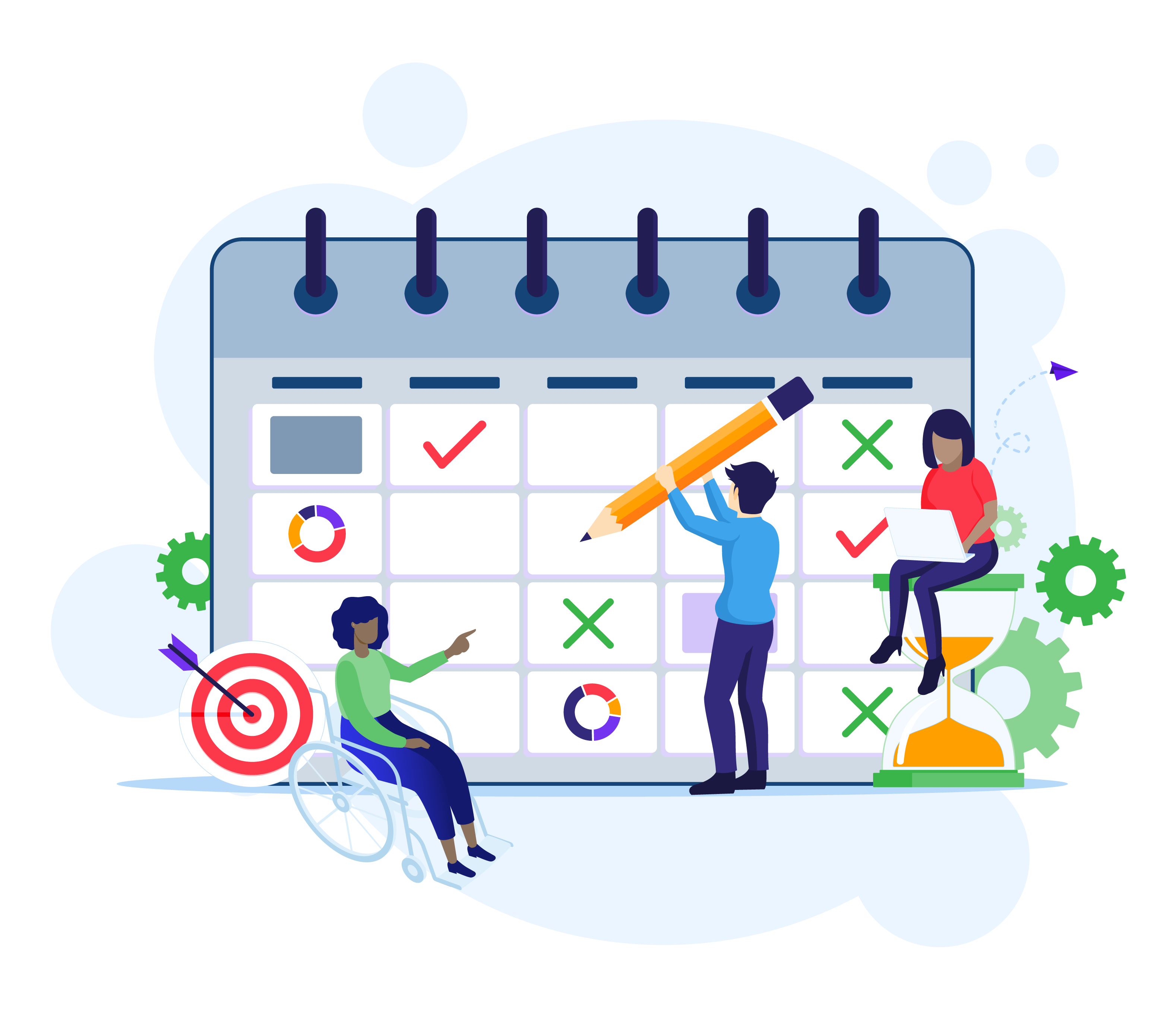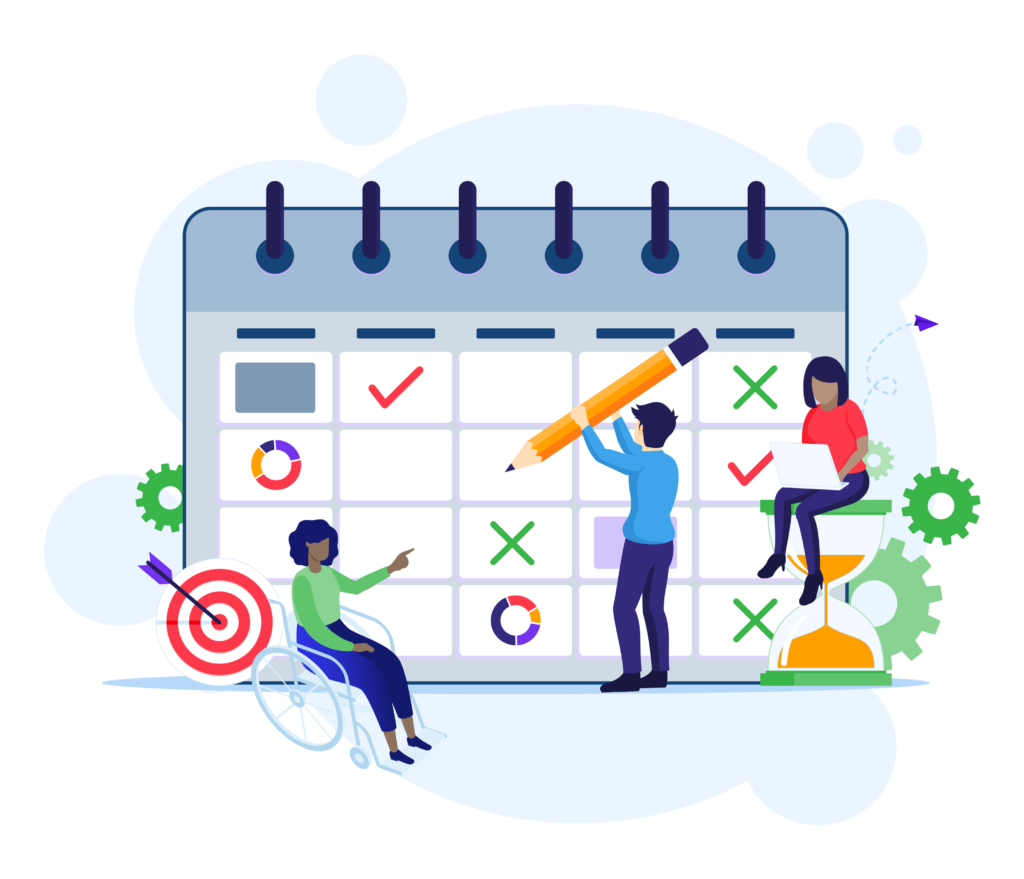
This blog post has been updated as of March 2024. It was originally published in March 2023.
Author: Margo Smith
Contributors: DaSy’s Data Managers Community, Lisa Backer, and Robin Nelson
Every season in the calendar year has a season of data needs for Part C and Part B 619 Data Managers and Coordinators. We asked DaSy experts for tools that are helpful for this season and for ways to prepare for what’s ahead.
Part C Data Managers, Coordinators and staff have recently completed the immense task of submitting State Performance Plan/Annual Performance Reports (SPP/APR). According to the paperwork burden estimate, staff spend about 1,095 hours on the Part C SPP/APR submission “including time for reviewing instructions, searching existing data sources, gathering and maintaining the data needed, and completing and reviewing the collection of information.” You deserve more than a pat on the back.
1.Update Now
- Make updates and take action now to set yourself up for more ease with next year’s SPP/APR submission.
2. Public Reporting
- Post your SPP/APR to your state agency’s website no later than 120 days following submission. Report to the public on the performance of each local EI program for required APR indicators.
3. Budget
- Include Data System Improvements in upcoming budgets.
4. NEW TIMELINES:
- Child Count Data for school year (SY) 2023-24 are due August 28, 2024.
- Exiting and Dispute Resolution Data for SY 2023-24 reopens May 1, 2023, and are due November 20, 2024
Reflect first
First, did you take a day to recharge or an hour to rejuvenate? Find some time for this essential task first.
Then take a breath, and another breath. And another.
Start today by reflecting. Think about the individuals that each data point represents – our children, our families and our neighbors. Reflect however most connects to your life and most feels right to you. What stood out to you in the data this time around?
Update and Revise Internal Processes and Deadlines
Here are the top Part C Data tasks to tackle this month while the submission process and your memory is fresh. Work through these steps to ease preparation for SPP/APR submission the next time around. The Part C Data Managers Community recommends taking time this month to prepare for next year’s submission. DaSy TA specialists recommend using the Part C Data Collection Calendar document to map out monthly tasks related to data collection and reporting.
- Consider the following questions to start: How did it go? What do you want to avoid next year? Where do you need to tweak the process and timeline internally to make sure that you can reach your timing and submission goals? For example, who is responsible for ensuring submission attachments are 508 compliant? How much time do they need for this? Build in more time than you think is needed to account for unforeseen issues and just plain life happening.
- Solicit and incorporate suggestions for process and timeline improvements from all staff involved in the process.
- Make changes to the Part C Data Collection Calendar tool and any other existing state specific tools and documents that serve this purpose for your state team.
Plan Data Quality Improvements
Was there any part of this process in which you questioned the quality of data? Now is the time to take action to improve the quality of the data before beginning local collection on July 1, 2024. “All the power in improving data quality sits with local program leaders,” said Lisa Backer, DaSy TA Specialist and former supervisor of (and former) Part C Data Manager and of Part C and Part B/619 Coordinators in Minnesota. How will you inspire action in local program leaders to improve data quality? Consider including local staff in your reflection on the submission process. Identify and act on local data anomalies or successes or improvements every month in some way.
Document. Document. Document.
Get started on adding notes to Part C Data Protocols. Then set aside time as a team to revisit and refine each protocol on a regular basis. Each protocol except the State Landscape Protocol allows for documenting details such as due date, contact information, and specific steps for the collection, validation, and submission of IDEA data. Time spent on these documents will pay off for DMS 2.0, data quality, and more. We promise. While your memory is fresh, document, document, document.
Modernization
OSEP Modernization means more quality checks, an emphasis on quality data notes, and no resubmission. Check out IDEA Part C Data Notes (DaSy, 2021), which describes the purpose of data notes and how they are used in OSEP’s data quality review process. It includes tips and best practices for writing and submitting data notes.
EDFacts Metadata and Process System (EMAPS) User Guides
Three critical documents that you must review thoroughly to ensure the reporting of high-quality Part C data are the EDFacts Metadata and Process System (EMAPS) User Guides for Child Count and Settings, Dispute Resolution, and Exiting. These annually updated guides explain step-by-step how to report these data. The guides are available on the EDFacts website and are updated for the most recent data collection year around one month before the due date. The Child Count and Settings guide is often updated in February, and the Dispute Resolution and Exiting guide was previously updated in November (prior to modernization changes).
Budget for Data System Enhancements
Identify and advocate strongly for data system enhancements as the budget for the next fiscal year is finalized.
If you need support in any of these areas, DaSy TA specialists can help. Please reach out to your DaSy liaison with any questions.
Resources for ongoing learning
- Part C Data Protocols
- How Prepared are You? Data Governance webinar
- IDEA Part C Data Notes (DaSy, 2021)
- Request Part C Data Orientation from DaSy for staff. Contact your DaSy liaison.
- Attend DaSy’s Data Managers Office Hours which occur the 2nd and 4th Tuesday of every month from 2:00-2:30pm EST. Contact your DaSy liaison for more information and to get connected.
About the Authors

Lisa Backer is a DaSy consultant. After a 20-year career with the Minnesota Department of Education, Lisa currently works for SpEd Forms, a special education software company serving districts in Minnesota and Wisconsin. She was an ECSE teacher and district administrator for 13 years before transitioning to state agency work. During her tenure with MDE, Lisa helped lead the development of the child outcomes measurement system and the early child real-time data warehouse. She actively oversaw the creation of the Centers of Excellence, the professional development initiative that works to support districts to effectively implement evidence-based practices, including the Pyramid Model.

Robin Nelson, Ph.D., now retired, was a DaSy TA provider with more than 30 years of experience in program evaluation and applied research in education, social, and human services. Prior to her work with DaSy, she directed outcomes, evaluation, and data systems activities for Texas’ Early Childhood Intervention (Part C) program for more than 12 years.

Margo Smith is a DaSy consultant providing communications and other support for DaSy TA products. She has a background in journalism, data visualization, and data use in early childhood care and education TA.
Re-published March 2024. Published March 2023.


